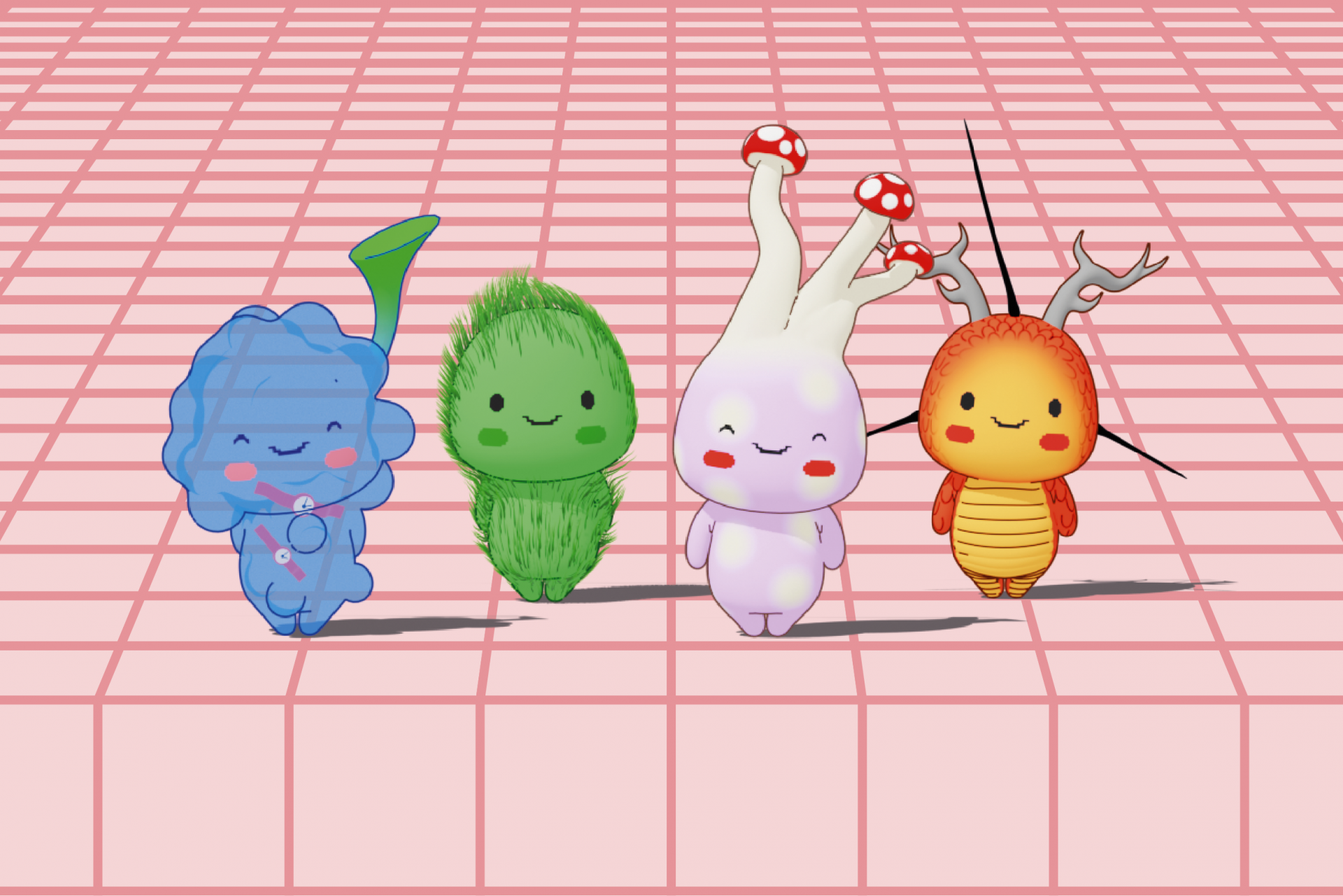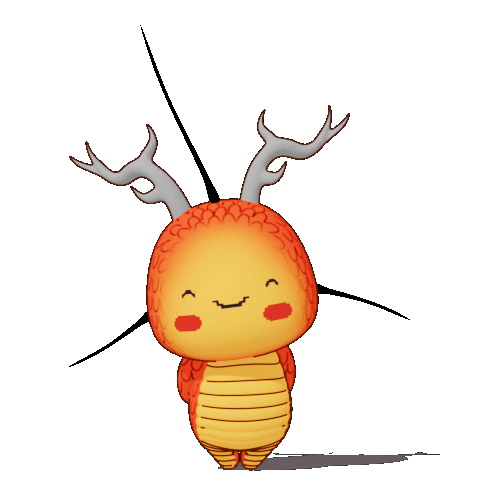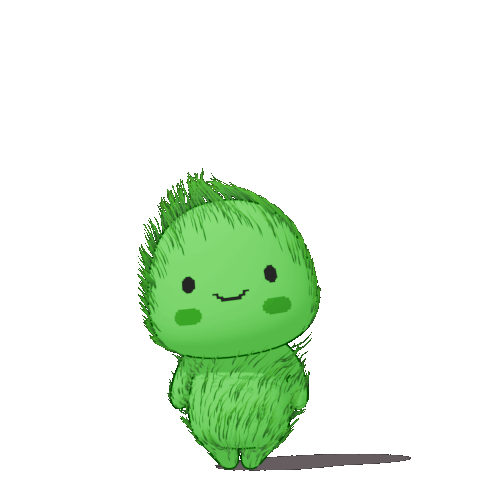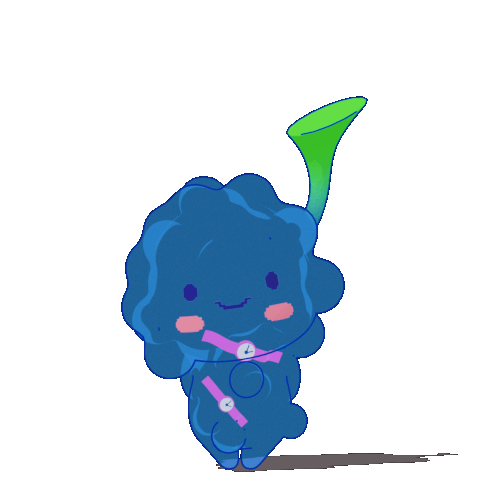Flower Power
Alexandra Daisy Ginsberg’s algorithmically designed gardens cater to the needs of insects and plants, rather than the aesthetic preferences of humans.

How many of today’s NFT collectors once owned a Tamagotchi—or its masculinized counterpart, the Digimon? There are no solid statistics, but you could think of these electronic toy “pets” on keychains, feverishly collected and cared for by kids and preteens in the late 1990s and early 2000s, as spiritual ancestors to the tokens now accumulating in the digital wallets of NFT acolytes. (Like many of my generation, I briefly had custody of a Tamagotchi, but what with extracurriculars and school trips the responsibilities soon grew overwhelming. I do not yet own an NFT.) This is the logic behind artist Ed Fornieles’ latest project, the launch of a collection of “living NFTs” that take the form of blobby cartoon characters, which Fornieles has christened “finiliar.” There was a presale at the start of January: like Tamagotchis, the finiliar are sold inside colourful eggs, which will hatch after the main sale in March. Rather than the attentivity of its owner, the wellbeing of each finiliar—from the Bitcoin Demons to the Doge Dogs—is tied to the fortunes of a particular cryptocurrency. As the project website explains, “They become happy and buoyant when the currency they are linked to does well, and sad or even sick when it performs poorly.” On first impression it is a wilfully nostalgic, even silly, enterprise. But spend a little longer in their company, and these emotionally volatile tokens reveal themselves as quite ingenious reflections of the attachments that humans can form to commodities, whether physical or digital—including, of course, NFTs.

Fornieles’s NFTs are still in development—you can follow the ongoing design process via the public Miro board—but an earlier iteration was presented in an exhibition at Arsenal Contemporary in New York in 2017. Visitors were introduced to three finiliar whose mood tracked the performance of Ethereum, the American dollar, and the British pound. In a promotional interview for the show, Fornieles observed that the finiliar tied to pound sterling, named Dunop, had “unfortunately [been] very sick since Brexit.” The creatures, simply outlined and lightly pixelated cartoons with massive pillowy heads, small but soft bodies, round wide-set eyes, and permanently blushing cheeks—available in a range of pastel shades—were represented in the form of sculptures, prints, and a video entitled Tulip Fever (the title recalling that Dutch Golden Age craze for the then-exotic flower bulbs). The video, now embedded on the finiliar website, consists of a short animation focusing on the character of Dunop. We witness Dunop’s daily routine: eating breakfast, doing his stretches, toddling around with his fellow finiliar, blowing bubbles, all the while oscillating between manic joy and prone dejection. The footage plays four times, the first three with a narration that offers an alternate perspective on the characters, and finally with only music on the soundtrack. It begins with an upbeat kids’ TV show–style tour of Finiliarland and its “recently discovered” inhabitants; then, a meta reflection on the “artist’s intentions with producing the finiliar”; and, lastly, a corporate advertisement for “empathy tools” that were “developed by engineers based in Montreal”—where the British-born Fornieles, incidentally, has a studio.
If you truly loved the British pound, maybe you wouldn’t have voted for Brexit.
Despite these contradicting origin stories, all three narrators agree on the essential aesthetic quality of the finiliar: cuteness. “What was once invisible,” says our kids’ show presenter, referring to the pools of data that the creatures embody, “now appears to us in the most delicate, sweetest, cutest form imaginable.” The new NFT finiliar, whose appearances are more individuated—they share a basic body type but come with additional features such as little gray antlers or three tiny toadstools sprouting from their heads—are being marketed in the same way. “7pm there is a presale for these cuties discord,” Fornieles tweeted on January 7, along with a Discord channel invitation link and an image of the green, grass-covered Tezos finiliar. This was not just the bias of an artistic papa-bear bursting with pride over his creations. The visual attributes of the cartoon characters are designed to accord as closely as possible with features identified by scientists as resulting in maximum cuteness. These qualities, as summarised in Natalie Angier’s oft-cited 2006 New York Times article “The Cute Factor,” include but are not limited to big front-facing eyes, round faces, and general floppiness: in short, anything that, in its baby-like form, signals “extreme youth, vulnerability, harmlessness and need.”. It is no coincidence that, as the corporate presenter explains in Tulip Fever, “the finiliar use proportions connected to a newly born human child” calibrated to foster a sense “of parental bonds and responsibility in the viewer.”

It is commonly remarked that there must be an evolutionary reason for the connection between cuteness and vulnerability. Why else would parents devote themselves so wholeheartedly to the rearing of such useless, wailing, perpetually excreting beings as human infants (see also: the constant attention required to stop your Tamagotchi from converting, as mine did, into a pixelated gravestone)? The promotional spiel in Tulip Fever builds on this idea: by caring for “these little critters,” we are told, “investors become emotionally entangled, allowing empathetic and financial investments to coalesce”—hopefully resulting in wide-reaching economic stability. If you truly loved the British pound, the argument goes, maybe you wouldn’t have voted for Brexit. But, as another of Fornieles’s narrators points out, our feelings towards cute things are not always so simple. “Who benefits from this relationship and how?” she asks. Dwelling on the potential negative mental and economic impacts of owning a finiliar that isn’t doing so well, or whose improvement is contingent on the weakening of another, she continues: “The cute façade begins to crack, revealing a menacing face.” This line echoes the ideas in Sianne Ngai’s landmark 2012 book Our Aesthetic Categories: Zany, Cute, Interesting, which defines the cute as “an aesthetic disclosing the surprisingly wide spectrum of feelings, ranging from tenderness to aggression, that we harbor toward ostensibly subordinate and unthreatening commodities.”
A key source of ambivalence in encounters with cuteness: the nagging worry, underlying the joyful rush of dopamine, that you are being manipulated.
As Ngai explains, cute beings or things can provoke an almost violent desire to possess, even to consume them—a sentiment often expressed in fittingly cutesy parlance: “I just want to gobble you all up!” For Ngai, it is this impulse towards ownership and consumption that makes cuteness one of the dominant aesthetics of late capitalist consumer culture: a “commodity aesthetic” par excellence. She invokes Walter Benjamin, who once wrote that “If the soul of the commodity which Marx occasionally mentions in jest existed, it would be the most empathetic ever encountered in the realm of souls, for it would have to see in everyone the buyer in whose hand and house it wants to nestle.” I wonder whether the creators of the Tamagotchi—who sold 40 million units of the handheld toy in the first two years after its release—ever read Benjamin. Even they failed to envisage a way of turning money itself into an adorable consumer product—which is, you could say, what Fornieles has achieved with the NFT finiliar. As well as embodying different cryptocurrencies, as tradeable NFTs the finiliar are literally a kind of financial instrument. (The same could be claimed of the sculptures and prints of Dunop and friends that Fornieles exhibited and sold in New York in 2017, but those were finiliar portraits rather than actual finiliar.) The presale release of 1,000 eggs—priced at 0.06 ETH, a 40% discount on the planned main sale price—sold out in ten minutes. It turns out people really wanted their very own finiliar.

A key source of ambivalence in encounters with cuteness: the nagging worry, underlying the joyful rush of dopamine, that you are being manipulated. “The cute response,” as Angier writes, is “readily overridden by the angry sense that one is being exploited or deceived.” The whole experience is cheapened; you feel you have been somehow cheated. Again, this is the language of consumerism—of commodities and their inherently disputable market or exchange value. Does this remind you of anything? Contemporary art has always been subject to debates over and disparagements of its worth—think of the furore when Tate acquired Carl Andre’s stack of firebricks in 1972, or more recently when Maurizio Cattelan taped a banana to a wall at Art Basel Miami Beach—but this indignation has reached new heights in the discourse on NFTs. NFT creators are labelled grifters and scammers; investors are dupes. While every industry has its charlatans and frauds, the anxiety over what exactly you are buying when you buy an NFT (both the on-chain proof of ownership and the usually digital asset that accompanies it) is more existential. In this still nascent marketplace, the queasy interplay of desire and distrust, of attraction and irritation and aggression, that structures our attachments to commodities is especially close to the surface. With their overt demand for emotional as well as economic investment, the NFT finiliar make these conflicted feelings impossible to ignore. Indeed, for all the evident craft that has gone into the making of the maximally cute finiliar and the conceptual rigor of the enterprise (not to mention the success of the presale), at this stage Fornieles still declines to dismiss concerns over their value entirely. On a FAQ page on the project website, the question “Why does finiliar matter?” is posed. The response: “It’s too early to know how the wider NFT space and the finiliar release will fare in 2022.” But the hope, at least, is that the sales will give these tiny unborn tokens “the best possible start in life!” The heart melts.
Gabrielle Schwarz is a writer and editor based in London.
